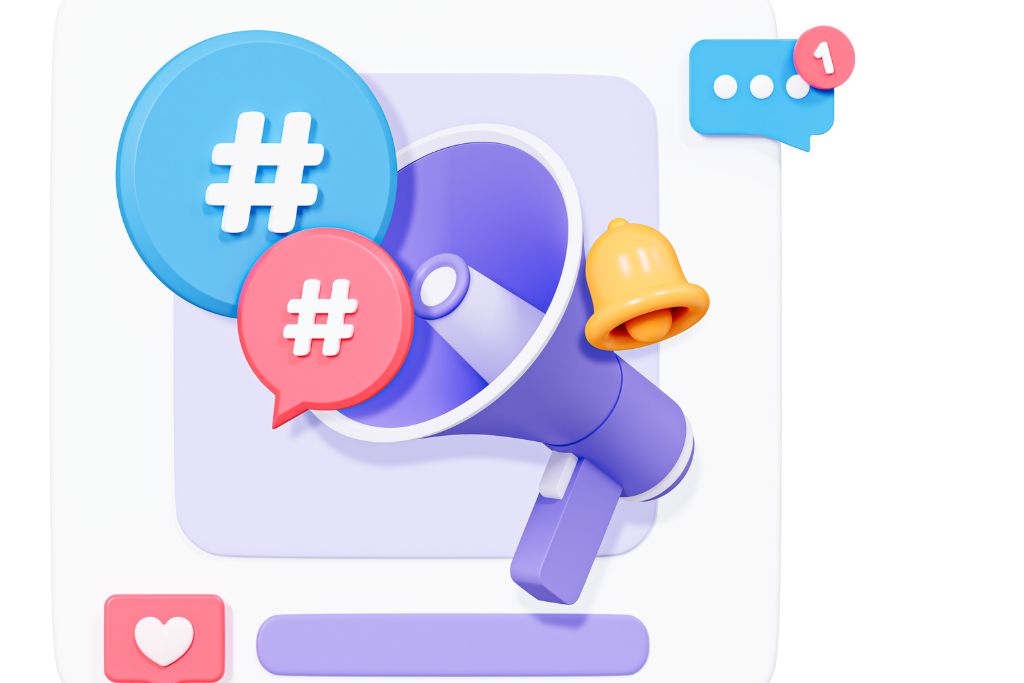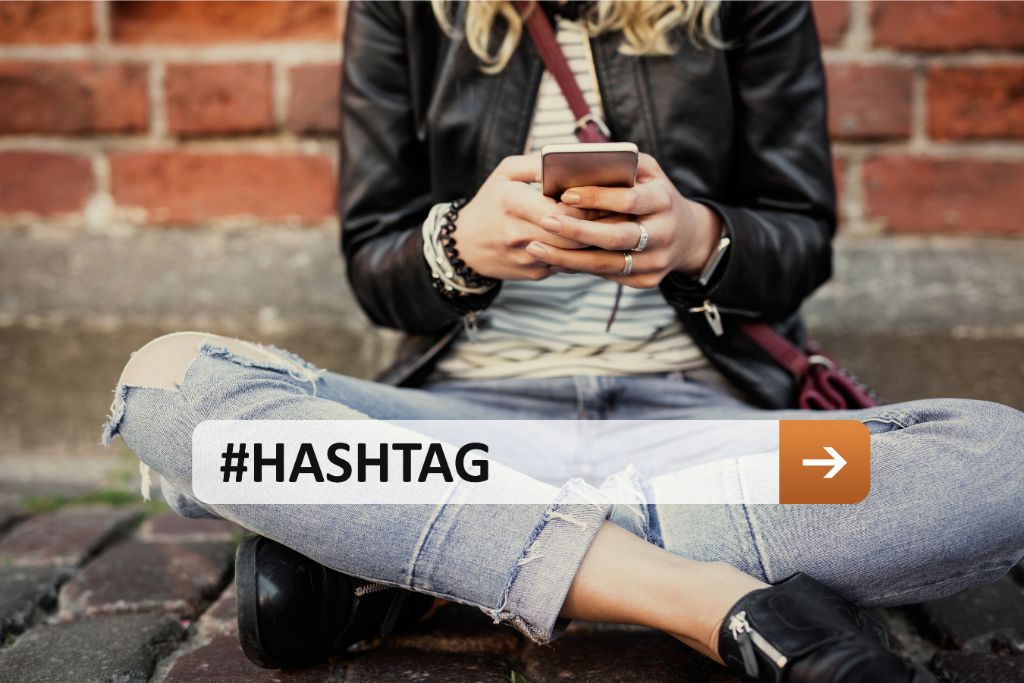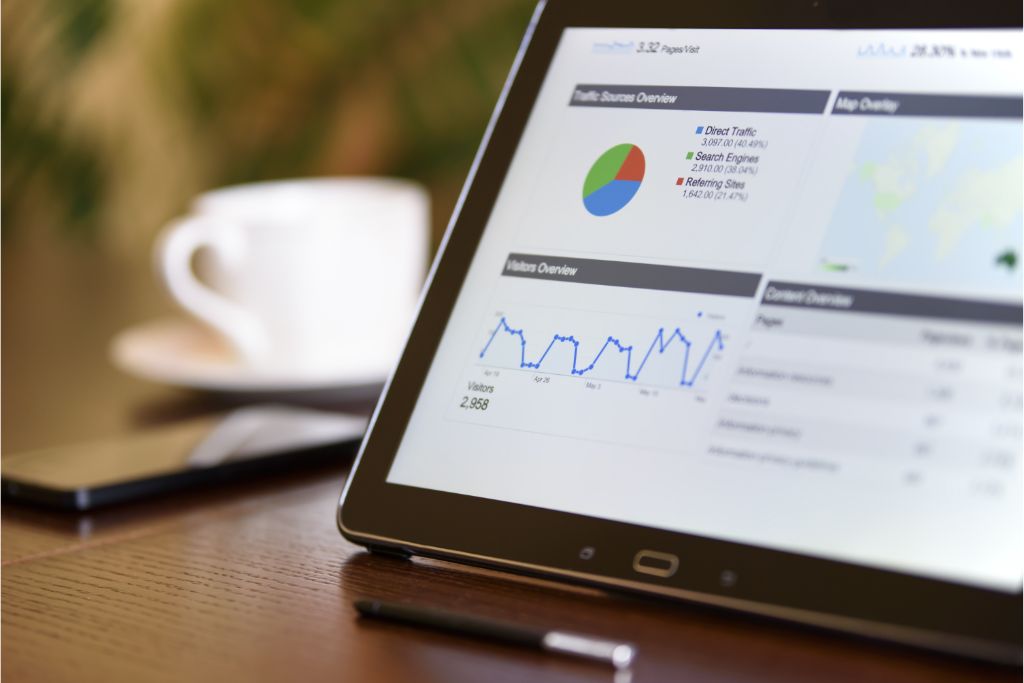10 Pro Tips to Build an Effective Instagram Hashtag Strategy
Instagram has become a social media powerhouse With a massive user base of over 1 billion active individuals worldwide. Both businesses and individuals have recognized its potential for brand promotion and expanding reach. That’s where hashtags come into play as an incredibly effective strategy.
Surprisingly, posts containing even just one hashtag receive a remarkable 12.6% increase in engagement compared to those without. However, crafting a successful hashtag strategy demands meticulous planning and thorough research.
In this article, we present you with ten pro tips that will assist you in developing an Instagram hashtag strategy that enhances your visibility and engagement on this vibrant platform.
Table of Contents [show]
Understanding the power of hashtags is essential in developing an effective Instagram hashtag strategy. Hashtags have become a fundamental aspect of social media platforms, allowing users to categorize and discover content based on specific topics. One key aspect of hashtags is their potential to go viral, which can significantly increase brand visibility and engagement.
Viral hashtags have gained widespread popularity and are widely shared by users across different platforms. These hashtags often capture current trends or events, making them highly relevant and shareable.
Staying updated with the latest happenings in your industry or niche is crucial to leveraging hashtag trends effectively. You can identify relevant hashtags that align with your content strategy by monitoring trending topics and conversations. Additionally, researching popular industry-specific hashtags can help increase your reach to a targeted audience.
When leveraging hashtag trends, it is important to balance popular and niche-specific tags. While using popular tags may expose your content to a broader audience, utilizing niche-specific tags allows you to target users more likely to engage with your content.
Conducting niche-specific hashtag research and making appropriate selections is crucial to building an effective Instagram hashtag strategy.
Niche-specific hashtag research involves identifying the most relevant and popular hashtags specific to your industry or target audience. This process allows you to understand the trending topics and conversations within your niche, enabling you to connect with a highly engaged audience.
Effective hashtag selection entails choosing hashtags that balance popularity and competition, ensuring maximum visibility for your content without getting lost in a sea of posts.
Niche-Specific Hashtag Research
Conducting thorough research on niche-specific hashtags is essential for developing an effective Instagram hashtag strategy. Hashtag optimization plays a crucial role in maximizing hashtag reach and increasing visibility on the platform. By identifying and using relevant niche-specific hashtags, users can target their desired audience and increase engagement with their content.
Identify your niche’s main topics or themes to conduct niche-specific hashtag research. Use tools like Instagram’s search feature, explore page, or third-party apps to discover popular hashtags within your niche. Analyze the number of posts using these hashtags to determine their popularity and competitiveness. It is also important to consider the relevance of these hashtags to your specific content and target audience.
Additionally, observe how other successful accounts within your niche are using hashtags. Please pay attention to the tags in their most popular posts and incorporate similar ones into your strategy. Regularly review and update your hashtag list based on current trends and changes in your industry.
Effective Hashtag Selection
To select effective hashtags, it is important to consider the relevance of the hashtags to your specific content and target audience, as well as their popularity and competitiveness within your niche. Hashtag analytics can provide valuable insights into the performance of different hashtags, allowing you to optimize your hashtag strategy for maximum reach and engagement. You can identify which hashtags drive the most visibility and interaction with your posts by analyzing hashtag impressions, reach, and engagement rate. Additionally, conducting hashtag research to understand the competitiveness of specific hashtags within your niche can help you choose tags with a higher chance of being discovered by users.
Here is an example table showcasing how hashtag analytics can inform your decision-making process:
| Hashtag | Impressions | Reach |
|---|---|---|
| #fitness | 500,000 | 250,000 |
| #workout | 750,000 | 400,000 |
| #fitspiration | 300,000 | 150,000 |
In this scenario, while all three hashtags have significant impressions and reach numbers indicating popularity among users interested in fitness-related content, #workout stands out with higher figures in both categories. Therefore, using #workout may yield better visibility and potential engagement results.
Users can optimize their Instagram hashtag strategy for maximum reach and engagement by incorporating a mix of popular and niche-specific hashtags.
Popular hashtags are widely used and have a high volume of associated posts. By using these hashtags effectively, users can tap into a large audience base and increase the visibility of their content. However, it is essential to note that the competition for popular hashtags is fierce, making it crucial to select relevant ones that align with the shared content.
In addition to popular hashtags, incorporating niche-specific hashtags allows users to target a more specific audience within their chosen industry or interest group. These niche-specific tags may have lower usage than popular ones but can still attract highly engaged followers genuinely interested in the shared content. Maximizing reach with niche-specific hashtags involves identifying keywords and phrases that resonate with the target audience and using them strategically in posts.
To build an effective Instagram hashtag strategy, it is recommended to use a combination of both popular and niche-specific tags. This approach ensures exposure to a broader audience while targeting individuals more likely to engage with the content. Experimentation and tracking performance metrics will help refine the hashtag strategy over time, ensuring continuous growth in reach and engagement on Instagram.
Analyze and Monitor Hashtag Performance
Tracking hashtag engagement, identifying trending hashtags, and adjusting hashtag strategy are crucial to optimizing social media marketing campaigns. By monitoring hashtag performance, businesses can gain insights into the audience engagement level and measure their content’s success.
Identifying trending hashtags allows marketers to stay relevant and leverage popular topics to expand their reach.
Adjusting hashtag strategy based on data analysis enables companies to refine their approach and maximize the impact of their social media efforts. Therefore, understanding these key points is essential for effective hashtag utilization in digital marketing strategies.
Tracking Hashtag Engagement
One essential aspect of managing an effective Instagram hashtag strategy involves assessing the level of engagement generated by the hashtags used. Tracking hashtag engagement is crucial for measuring the effectiveness and reach of your hashtags.
Here are some pro tips to help you track and analyze your hashtag performance:
- Utilize Instagram Insights: This analytics tool provides valuable data on post reach, impressions, profile visits, and website clicks that can be attributed to specific hashtags.
- Monitor Comments and Likes: Analyzing the number of comments and likes received on posts with different hashtags can give insights into audience engagement levels.
- Look for Patterns: Identify which hashtags consistently generate higher levels of engagement and prioritize using them in future posts.
- Experiment with New Hashtags: Continuously test new hashtags to determine their impact on engagement metrics.
Identifying trending hashtags is valuable for gauging the current interests and conversations on Instagram. Users can gain insights into popular topics by analyzing hashtag performance and engaging with relevant communities.
One way to identify popular hashtags is by using Instagram’s explore feature, which displays trending content and associated hashtags. Additionally, third-party tools such as Hashtagify or RiteTag can provide data on the popularity and usage of specific hashtags. These tools allow users to track the performance of their chosen hashtags over time, including metrics such as reach and engagement.
This analysis helps users understand which hashtags effectively reach their target audience and drive user interactions. By staying updated on trending hashtags, individuals can keep their content relevant and maximize their visibility within the Instagram community.
Adjusting Hashtag Strategy
Adjustments to hashtags on social media platforms can enhance the reach and engagement of content for users seeking to maximize their visibility within online communities. Making strategic hashtag frequency and placement adjustments is key to optimizing their effectiveness.
To adjust hashtag frequency:
- Avoid using too many hashtags, as they may come across as spammy and dilute the impact of your content.
- Experiment with different numbers of hashtags to find the optimal balance between visibility and relevance.
To optimize hashtag placement:
- Place hashtags strategically within your post caption or comment section, ensuring they are relevant to the content.
- Consider incorporating popular or trending hashtags that align with your target audience’s interests.
To establish a strong online presence for your business on Instagram, it is recommended to create branded hashtags that are relevant and distinctive. Branded hashtags help promote your brand, encourage user engagement, and generate a sense of community among your followers. A well-executed branded hashtag campaign can significantly increase your brand’s visibility and attract new customers.
When creating branded hashtags, it is important to consider their relevance to your business and target audience. The hashtags should reflect your brand’s values, products/services, or unique selling points. Additionally, they should be easy to remember and use so that users can easily incorporate them into their posts.
Measuring the success of your branded hashtag campaigns is crucial in determining their effectiveness and making necessary adjustments. There are several metrics you can use to evaluate the performance of your hashtags:
- Reach This metric measures the number of unique accounts that have seen posts containing the branded hashtag.
- Engagement: It includes likes, comments, shares, and saves on hashtag posts.
- User-generated content (UGC): UGC refers to content created by users featuring your branded hashtag. Monitoring UGC can provide insights into how well your audience engages with the campaign.
By analyzing these metrics regularly, you can measure the impact of your branded hashtag campaigns and make informed decisions about future strategies for improving reach and engagement.
| Metric | Definition | Importance |
|---|---|---|
| Reach | The number of unique accounts reached | Indicates campaign visibility |
| Engagement | Likes, comments, shares on tagged posts | Reflects user interest |
| UGC | User-generated content featuring tag | Measures audience participation |
Incorporating branded hashtags into your Instagram strategy can help enhance brand awareness, build customer loyalty, and drive growth for your business. You can refine and optimize future campaigns by measuring their success using relevant metrics for better results.
This discussion will focus on how businesses can capitalize on trends to increase their social media reach.
By staying up-to-date with current trends and incorporating them into their social media strategy, businesses can attract a larger audience and increase engagement.
Additionally, trending hashtags can help businesses reach a wider audience and gain visibility on platforms like Instagram and Twitter.
Capitalizing on Trends
By incorporating popular and relevant hashtags related to current trends, Instagram users can effectively increase their visibility and engagement on the platform. Maximizing exposure and attracting new followers are crucial goals for individuals and businesses.
Here are some tips on how to capitalize on trends through hashtag strategy:
- Stay informed about current events, pop culture, and industry-specific trends.
- Follow news outlets, influencers, and relevant accounts to stay updated.
- Use tools like Google Trends or social media listening platforms to identify emerging topics.
- Research popular hashtags within your niche.
- Analyze the top posts under these hashtags to understand what content performs well.
- Experiment with broad and specific hashtags to reach a wider audience while still targeting your niche.
Increasing Social Media Reach
Increasing social media reach requires a strategic approach that incorporates various techniques. These techniques include analyzing audience demographics, optimizing content for different platforms, and engaging with followers through interactive posts.
To increase brand awareness and maximize social media impact, it is essential to understand the target audience’s preferences and behaviors. Analyzing audience demographics helps in tailoring content that resonates with their interests. This, in turn, increases the likelihood of engagement and sharing.
Optimizing content for different platforms ensures it is visually appealing, easily discoverable, and shareable across multiple channels. By adapting the content to the specific platform, brands can effectively reach their target audience and increase their social media reach.
Engaging with followers through interactive posts fosters a sense of community and encourages them to participate actively in discussions or share the content with their networks. This interaction not only increases engagement but also helps in building a loyal and dedicated following.
Engage With Hashtag Communities
Engaging with hashtag communities allows Instagram users to connect with like-minded individuals and increase their visibility within specific interest groups. To effectively engage with hashtag communities, users can employ various strategies:
- Research popular hashtags: Researching hashtags related to your industry or niche can help you identify the most relevant communities to engage with.
- Use tools like Hashtagify or RiteTag to discover popular and trending hashtags.
- Analyze competitor accounts to see which hashtags they are using successfully.
Join conversations: Engaging in conversations within hashtag communities is crucial for building relationships and increasing visibility.
- Comment on posts within relevant hashtags, providing valuable insights or asking thoughtful questions.
- Like and share content from other users in the community to establish rapport.
Measuring the success of your hashtag strategy is essential for understanding its effectiveness:
- Track engagement metrics: Monitoring likes, comments, shares, and followers gained through specific hashtags can provide insight into audience engagement.
- Use Instagram Insights or third-party analytics tools like Sprout Social or Hootsuite for detailed metric tracking.
- Monitor user-generated content: Encourage followers to use your branded hashtag and monitor the content they create. This helps measure brand reach and overall community engagement.
Incorporating hashtags in captions, comments, and stories allows for greater visibility and discoverability of Instagram content within specific interest groups. Hashtags serve as a powerful tool to categorize and organize content on Instagram, enabling users to search for and explore posts related to their interests. However, it is essential to use hashtag etiquette strategically to maximize reach.
To understand the significance of incorporating hashtags in captions, comments, and stories, let’s consider the following table:
| Type | Pros | Cons |
|---|---|---|
| Captions | – Directly associated with the post – Increases visibility – Can include multiple relevant hashtags |
– Can make caption appear cluttered – Limits space for other text |
| Comments | – Allows engagement with existing conversations around specific hashtags – Enhances discoverability by appearing in hashtag feeds |
– May be perceived as spam if overused – Requires thoughtful contribution |
| Stories | – Provides an additional platform for hashtag usage – Increases chances of being featured in hashtag story feeds – Offers creative opportunities through stickers and interactive elements |
– Limited lifespan (24 hours) – Not searchable after 24 hours |
Utilizing hashtags in Instagram Stories and Reels allows for broader audience reach and potential content discovery within specific interest groups. By incorporating relevant hashtags strategically, you can maximize the reach of your Instagram stories and reels, increasing their visibility to a larger audience.
Here are some tips on using hashtags effectively in Instagram stories and reels:
- Choose relevant hashtags: Selecting hashtags that directly relate to the content in your story or reel is crucial. This helps ensure your content reaches the right audience interested in your offer.
- Use popular hashtags: Including trending hashtags can boost the discoverability of your stories and reels. However, it’s important to balance using popular tags and niche-specific ones.
- Popular tags: These tags have a high search volume but may also have intense competition.
- Niche-specific tags cater to more specific interests, allowing you to target a smaller but potentially more engaged audience.
Test and Refine Your Hashtag Strategy
To optimize the reach and discoverability of your Instagram stories and reels, it is essential to continuously test and refine your hashtag selection approach. Hashtags play a crucial role in categorizing content on Instagram, allowing users to search for specific topics or themes. However, not all hashtags are created equal, and tracking and monitoring their performance is essential to ensure they effectively attract the desired audience.
Testing different hashtags can help you identify which resonates best with your target audience. Using various relevant hashtags in your posts, you can analyze their impact on reach and engagement metrics. Tracking these metrics will enable you to determine which hashtags generate the most visibility and interaction from your followers.
Monitoring the performance of your chosen hashtags is equally important. Regularly reviewing analytics data will provide insights into how well each hashtag performs over time. This information lets you decide whether certain hashtags should be retained or replaced with more effective alternatives.
BONUS
Supercharge your Instagram hashtag strategy with OnlySocial’s essential post-planning and Scheduling function. Seamlessly plan and schedule your posts across all social networks, ensuring a strategic and effective approach to your hashtag usage. With unlimited posting and the ability to manage unlimited social profiles, you can expand your online presence without limitations. Don’t miss out on optimizing your social media strategy. Sign up for a commitment-free 7-day trial today.
Frequently Asked Questions
The maximum number of hashtags used in a single Instagram post depends on various factors, such as the target audience, content type, and platform guidelines. However, it is generally recommended to use 5-10 hashtags for optimal brand visibility and engagement.
How Often Should I Change or Update My Hashtag Strategy?
Regular evaluation and updating of one’s hashtag strategy is crucial for maintaining relevance and maximizing effectiveness on Instagram. Best practices include monitoring trends, analyzing audience engagement, and researching relevant hashtags to optimize content visibility and reach.
Using the same set of hashtags for every post may limit reach and engagement. Switching them up allows for greater exposure to different audiences and increases the chances of effectively reaching niche-specific communities or capitalizing on trending topics on Instagram.
Common mistakes with Instagram hashtags include using irrelevant or overused hashtags, failing to research popular and niche hashtags, and not monitoring hashtag performance. Choosing the right hashtags for your content is important by considering relevance, popularity, and competition.
How Can I Measure the Success of My Hashtag Strategy and Track Its Impact on My Account’s Growth?
Measuring the success of a hashtag strategy and tracking its impact on account growth can be achieved by analyzing competitors’ hashtag usage, exploring trending hashtags, and understanding hashtag engagement metrics.




